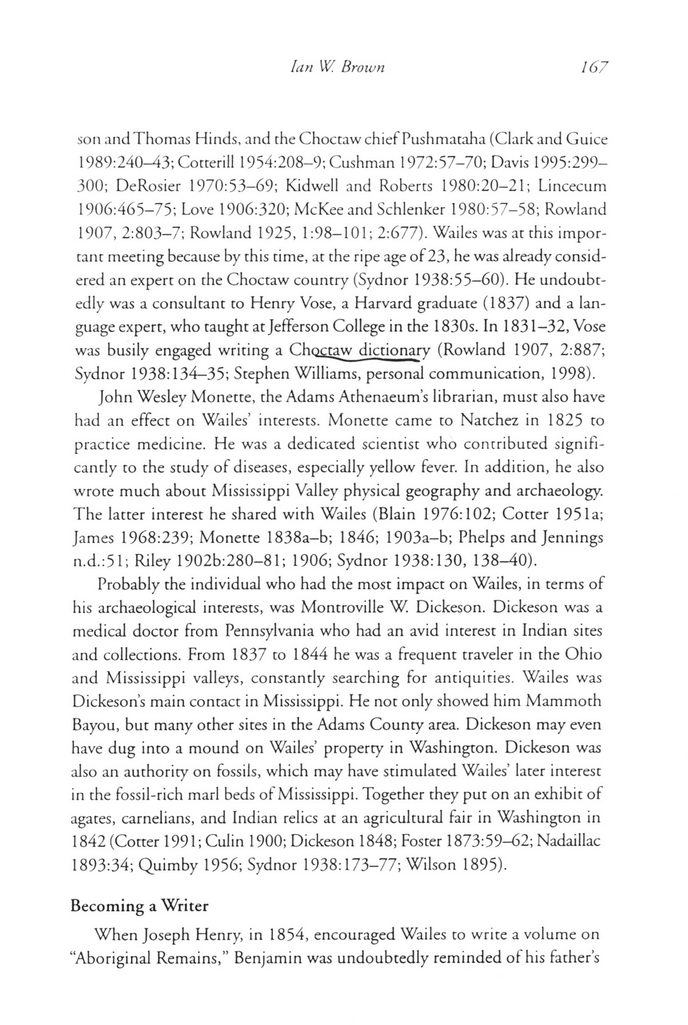This text was obtained via automated optical character recognition.
It has not been edited and may therefore contain several errors.
Ian W Brown 167 son and Thomas Hinds, and the Choctaw chief Pushmataha (Clark and Guice 1989:240-43; Cotterill 1954:208-9; Cushman 1972:57-70; Davis 1995:299-300; DeRosier 1970:53?69; Kidwell and Roberts 1980:20?21; Lincecum 1906:465-75; Love 1906:320; McKee and Schlenker 1980:57-58; Rowland 1907, 2:803?7; Rowland 1925, 1:98?101; 2:677). Wailes was at this important meeting because by this time, at the ripe age of 23, he was already considered an expert on the Choctaw country (Sydnor 1938:55?60). He undoubtedly was a consultant to Henry Vose, a Harvard graduate (1837) and a language expert, who taught at Jefferson College in the 1830s. In 1831-32, Vose was busily engaged writing a Choctaw dictionary (Rowland 1907, 2:887; Sydnor 1938:134?35; Stephen Williams, personal communication, 1998). John Wesley Monette, the Adams Athenaeum?s librarian, must also have had an effect on Wailes? interests. Monette came to Natchez in 1825 to practice medicine. He was a dedicated scientist who contributed significantly to the study of diseases, especially yellow fever. In addition, he also wrote much about Mississippi Valley physical geography and archaeology. The latter interest he shared with Wailes (Blain 1976:102; Cotter 1951a; James 1968:239; Monette 1838a-b; 1846; 1903a-b; Phelps and Jennings n.d.:51; Riley 1902b:280-81; 1906; Sydnor 1938:130, 138-40). Probably the individual who had the most impact on Wailes, in terms of his archaeological interests, was Montroville W. Dickeson. Dickeson was a medical doctor from Pennsylvania who had an avid interest in Indian sites and collections. From 1837 to 1844 he was a frequent traveler in the Ohio and Mississippi valleys, constantly searching for antiquities. Wailes was Dickeson?s main contact in Mississippi. He not only showed him Mammoth Bayou, but many other sites in the Adams County area. Dickeson may even have dug into a mound on Wailes? property in Washington. Dickeson was also an authority on fossils, which may have stimulated Wailes? later interest in the fossil-rich marl beds of Mississippi. Together they put on an exhibit of agates, carnelians, and Indian relics at an agricultural fair in Washington in 1842 (Cotter 1991; Culin 1900; Dickeson 1848; Foster 1873:59?62; Nadaillac 1893:34; Quimby 1956; Sydnor 1938:173-77; Wilson 1895). Becoming a Writer When Joseph Henry, in 1854, encouraged Wailes to write a volume on ?Aboriginal Remains,? Benjamin was undoubtedly reminded ot his father?s

Wailes, Benjamin Archeology of Mississippi-11